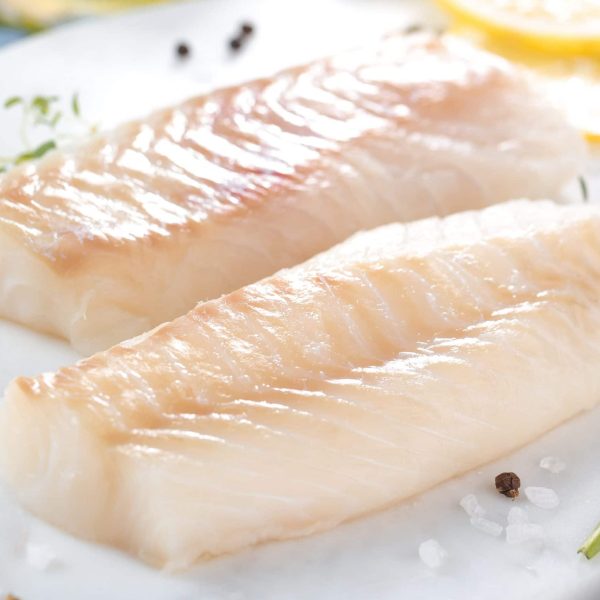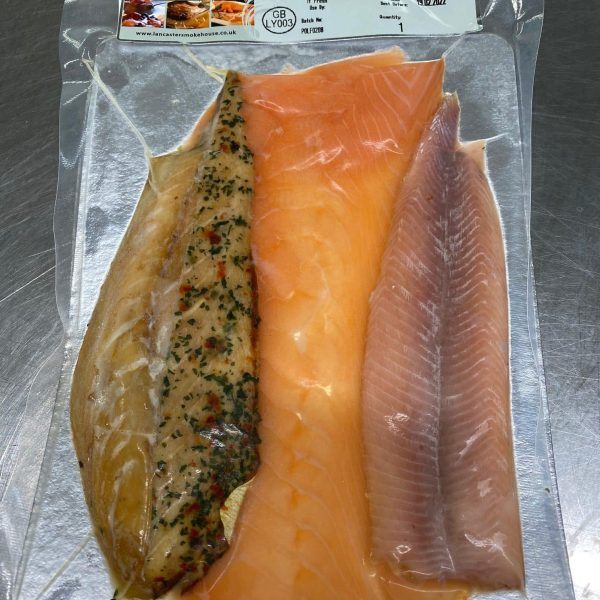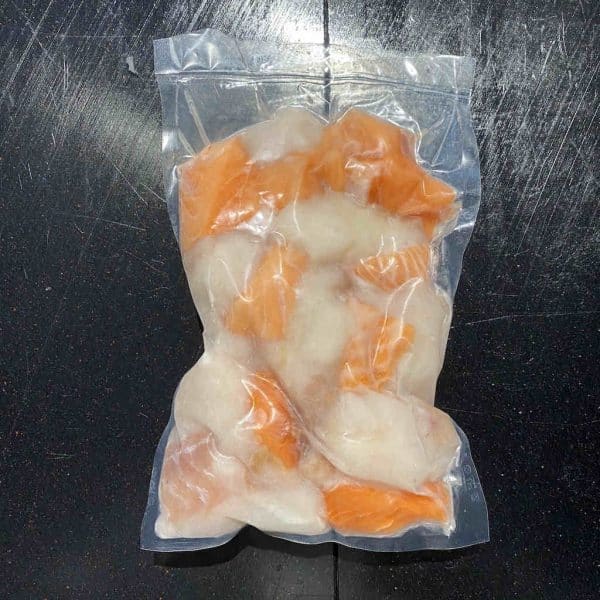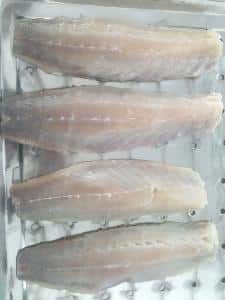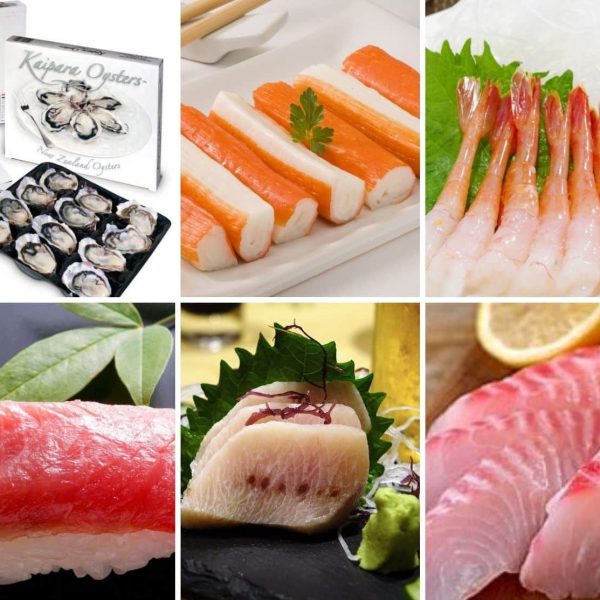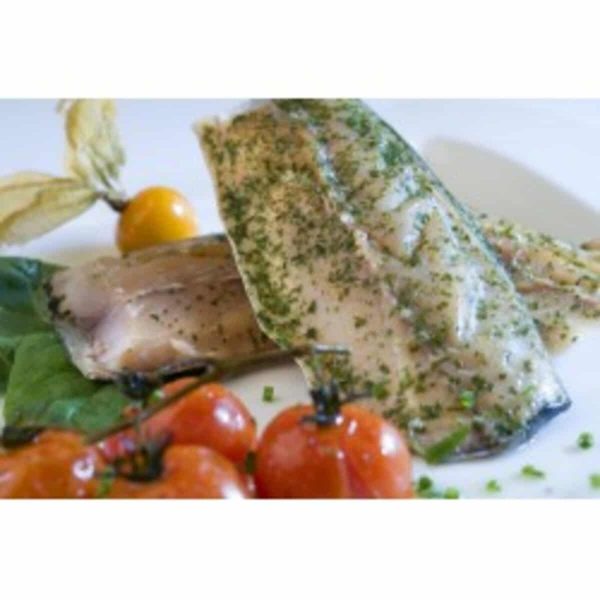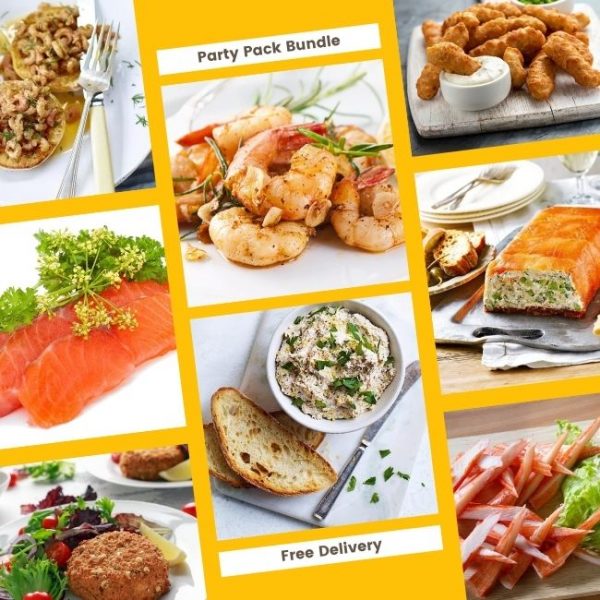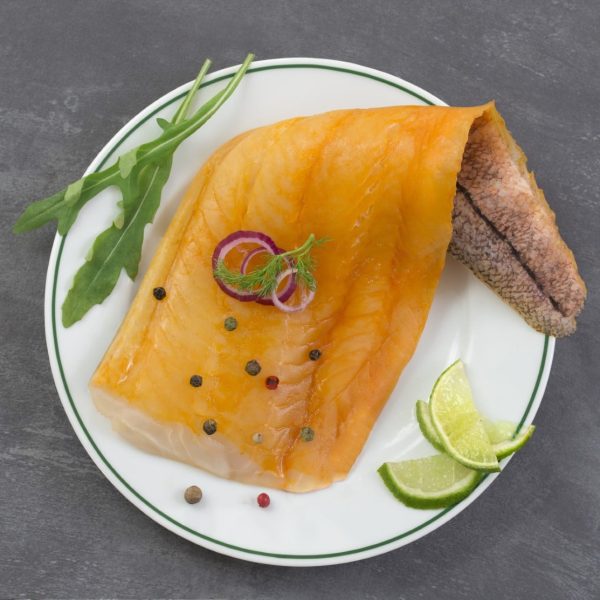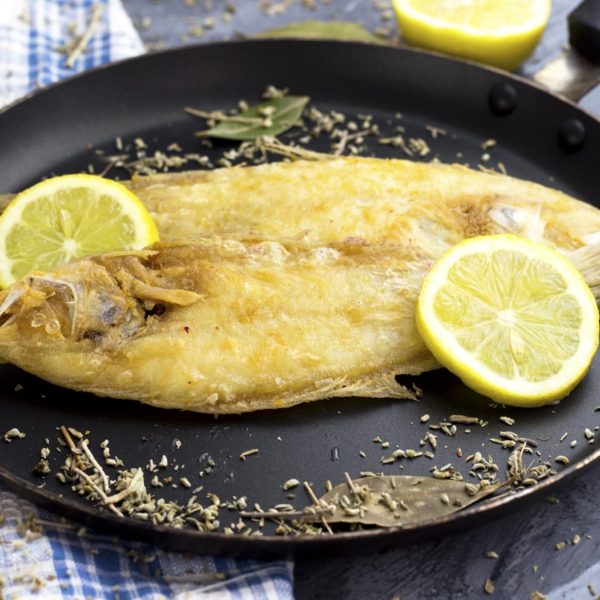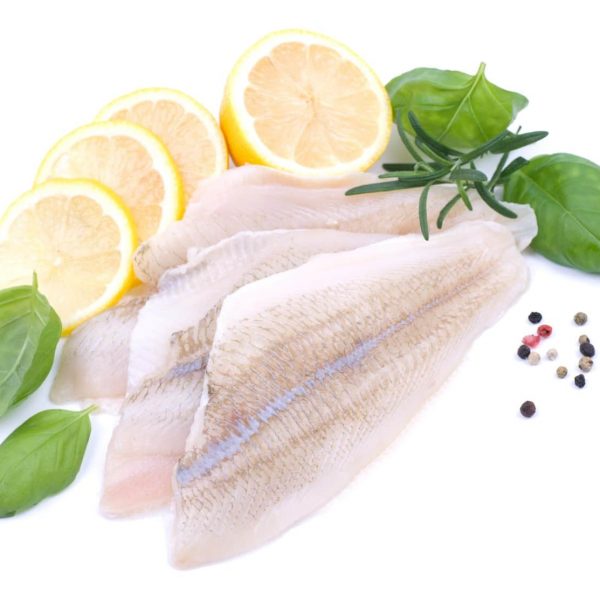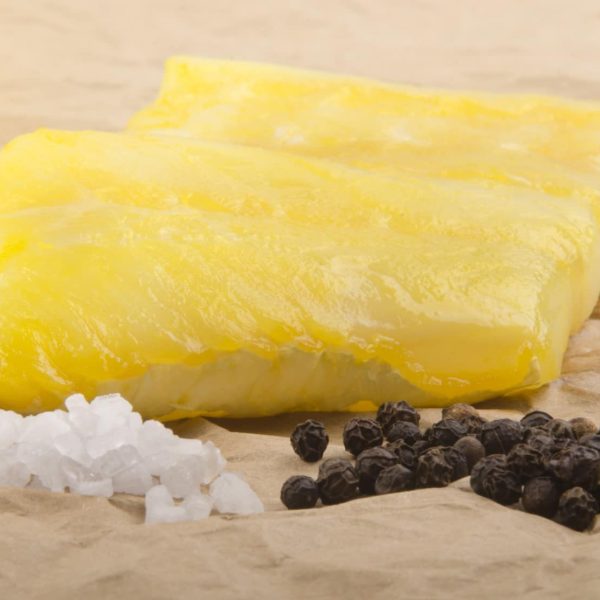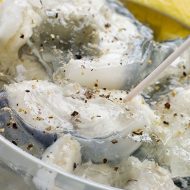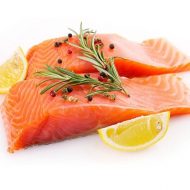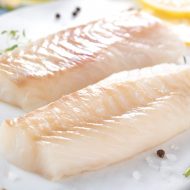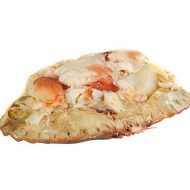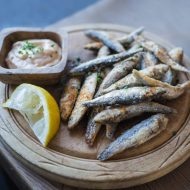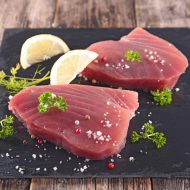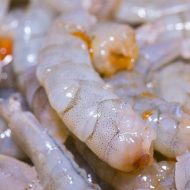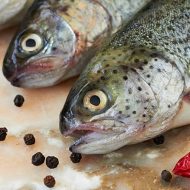1. Cod
You’ll be able to find your cod in various sizes and colours, from 500 grams up to over 6 kilograms. Cod is meatier than other fish, with large succulent flakes of pure white flesh perfect for cooking.
Cod has meaty flakes of pure white flesh that take on most flavours. When it comes time to prepare this tasty treat, remember not to rush things, or you might end up overcooking your fish!
It works well pan-fried in butter or poached, for example, as part of a rich tomato sauce, among other dishes like your favourite dish: Fish & Chips!
2. Haddock
Haddock is a popular whitefish that can be found in the chilly waters of Europe and North America. Haddocks are usually purchased by a fillet, as they aren’t typically available above 3kgs. They’re not perfect for steaks or suprêmes
Haddock has an even sweeter taste than cod because it’s so good for smoking! For those who love to cook with fish but want something different, haddock might do the trick. Due to their similarity, haddock and cod go great together in many recipes like casseroles.
3. Tuna
If you’re looking for a fish that has firm and rich meat, try out tuna! It is best seared on the outside with rare in the centre. Tuna can be cooked using many different methods such as grilling or frying it up like sushi (don’t forget to add soy sauce!).
There are two species of tuna often available: yellowfin and skipjack, which have slightly different tastes but both taste greatly grilled, steamed, eaten raw – whatever your preference may be.
Both types of these fishes come freshly packed too, so there’s no need to worry about them spoiling when they’ve been purchased from a store near you; this ensures their delicious flavour won’t perish before being enjoyed!
4. Salmon
Salmon is an amazing fish that deserves to be on everyone’s plate. Not only does it pack a punch in the flavour department, but it’s also great for your health! It has tons of Omega 3 and protein which are essential when trying to maintain or achieve balance in your diet.
Plus, there are so many ways to cook this delicious sea creature – oven-bake them skinless fillets if crusted with salt pepper; pan-fry those fillets with crispy skins (my favourite), steam whole pieces over spinach and lemon juice before coating everything remember parsley sauce; marinate salmon steaks overnight then grill up until they become juicy perfection while basting every now again. So don’t hesitate any longer!
Processing Traditional Fish
The process of butchery is always a delicate procedure, especially with fish. The preprocessing involved in frozen seafood production ensures that no matter where it goes from there, all raw materials are inspected and washed before butchering can commence. This includes removing parts such as viscera or fins which would otherwise be removed during processing at sea for preservation purposes if not already done so by fishermen themselves onboard their vessels before landing them ashore after harvesting.
Fish must maintain an internal temperature below 10 degrees Fahrenheit (-23 Celsius) while being stored according to the law regarding food safety standards. This range provides enough time for any remaining biochemical reactions like spontaneous spoilage to fruition without affecting taste and texture.
Freezing also makes for easy preparation because all you need to do is thaw the product when ready to use!
Benefits Of Frozen Traditional Fish
When you buy frozen fish from a sustainable fishery, your responsibility is to the environment. Frozen traditional fishing ensures that no harmful chemicals are used. It reduces carbon emissions at all stages of production without compromising on quality – making sure everyone can enjoy fresh-caught flavours any time they want!
Frozen traditional fisheries not only reduce environmental damage but also keep prices low by avoiding expensive transportation costs.
Freezing has been a technique around for millennia, and it is not without its benefits. It can result in high-quality fish throughout the year with no need to use preservatives, providing producers peace of mind about their seafood’s quality while maintaining low prices for consumers like you!
The freezing process does not require limiting chemicals or artificial substances such as chlorine, so you have nothing but pure meat that will last indefinitely.
We use a method for freezing food called “flash-freezing”, where we freeze processed foods before they have time to deteriorate or lose their flavour. This way, customers can enjoy our products at maximum quality without sacrificing any taste!
Frozen fish is the best option for those who don’t want to go overboard with their budget or waste food. The savings of frozen versus fresh are substantial, and you can still enjoy using as much or little as you please without concern over running out before your next grocery store trip!
Why Buy Frozen Traditional Fish From Us?
Frozen Fish Direct is the best choice for frozen fish and seafood. We are your go-to place when you need something fresh, delicious, sustainable or want a wide selection of products at competitive prices. Our team takes care in providing our customers with what they desire: quality produce delivered as efficiently as possible while maintaining high standards and values that make Frozen Fish Direct stand out from other places!
FrozenFishDirect provides professional caterers all year round with the finest fresh traditional foods sourced locally and around the world – including local sustainability and welfare of those who catch them through Sustainable Fishery Projects. We have an extensive range available: salmon fillets offcuts or wild Pacific cod loins professionally vacuum packed right up to hake cutlet.
Frozen Traditional Fish Nutritional Facts
A 112-gram serving of cod provides:
Calories: 90
Fat: 0.5g
Sodium: 79.5mg
Carbohydrates: 0g
Fibre: 0g
Sugar: 0g
Protein: 20g
A 150-gram serving of 1 Haddock fillet provides:
Calories: 135
Calories from Fat: 7.4
Total Fat: 0.8g
Cholesterol: 99mg
Sodium: 391.5mg
Potassium: 526.5mg
Carbohydrates: 0g
Sugar: 0g
Fibre: 0g
Protein: 30g
A 4-ounce serving of tuna comprises:
Calories: 145
Protein: 26.77g
Fat: 3.37g
Carbohydrates: 0g
Fibre: 0g
Sugar: 0g
A 196-gram serving of Salmon comprises:
Calories: 300
Calories from Fat: 135
Cholesterol: 105mg
Protein: 36g
Fat: 15g
Carbohydrates: 0g
Fibre: 0g
Sugar: 0g
FAQ’s
Can you possibly cook fish from frozen?
You may cook frozen fish straight from the freezer without having to thaw it first.
You'll need to increase the cooking time in your recipe by a few minutes to compensate for the lack of thawing, but you may poach, steam, roast, bake, or grill fish directly from the freezer!
Can you freeze previously frozen fish from the grocery store?
Traditional fish can be refrozen after it has been processed at a supermarket.
The condition of frozen meals is influenced by their freshness and quality at the time of freezing.
Is it possible to thaw fish outside?
Never defrost fish at room temperature, as germs can quickly proliferate under such condition.
Coldwater is a well-known and faster method of defrosting fish. For safety and flavour preservation, the fish must be kept in a sealed bag and submerged until defrosted.
When it comes to frozen seafood, how do you determine whether it’s bad?
Fish that has been spoiled has a nasty, pungent odour and is rotting. Fresh fish eyes are glistening and protruding.
Old fish's eyes are hazy and buried into their heads. Fresh fish have moist gills and fins.
The presence of light or greyish-brown dry particles or spots along the edges of the fish or even over the surface, known as freezer burn, shows that the fish has dehydrated.
What is the best method for preparing frozen fish?
Cooking raw items from a frozen condition is perfectly OK, but you'll need to lengthen your cooking time by around half to fully cook it.
Preheat the oven to 450 degrees Fahrenheit. Discard any ice from the frozen fish by rinsing it under a cold tap.
Place the fish on a baking sheet in a single layer and bake for 8-12 minutes, or until hot and flaky in the middle.

